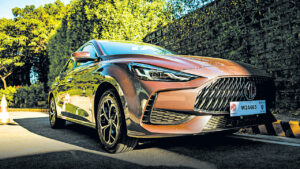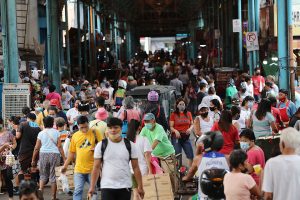Destinations worth visiting in Manila

Manila, the capital city of the Philippines, has been a hub of the country’s economic, social, and cultural activities. Nonetheless, besides being a usual place for many of us to go to work or study, Manila has a lot of destinations that embody its unique historical and cultural legacy — from churches, museums, parks, and even well-preserved buildings that are still captivating when one takes a moment to stroll and look around.
Here is a preliminary list of top attractions in Manila that are worth visiting and revisiting on your own or with friends and family for some fascinating and fun sights.
Fort Santiago
In the historic walled city of Intramuros, Fort Santiago was finished in 1593. The fort is significant for having served as a military center for the forces of foreign nations throughout Philippine history, notably the Spanish from 1571 to 1898, the British from 1762 to 1764, the Americans from 1898 to 1946, and the Japanese from 1942 to 1945. From the Spanish conquest to the Second World War, the fort has witnessed how history has shaped the city.
In addition, there are other buildings within the stone walls, including the well-known Rizal Shrine, also called the Museo in Jose Rizal Fort, which symbolizes the significance of the National Hero in the Philippines’ journey to independence. It is one of the best tourist destinations to visit with friends in Manila because aside from its history, the area also features attractive ancient architecture that is a must-see for anyone visiting the city.
Rizal Park
Rizal Park is also called the largest public park in the city, and Filipinos hold great affection for it because of its historical significance. The park includes fountains, stunning gardens, sculptures, monuments of historical figures, event spaces, and photo art and exhibits.
This very park was dedicated to Jose Rizal, the country’s national hero, since this is the very place where he got executed for fighting for the independence of Filipinos until the very end. Now, aside from its historical significance, this is a perfect place for strolls, dates, and bonding with family or friends.
San Agustin Church
Another top tourist attraction in the city is the oldest church in the Philippines, known as the San Agustin Church. After Intramuros was destroyed during World War II, San Agustin Church was the sole structure that survived unharmed. Constructed from 1587 to 1606, the church is known for its stunning baroque architecture, which led to the structure being recognized as a national landmark and a World Heritage Site by the United Nations Educational, Scientific and Cultural Organization (UNESCO).
Aside from its baroque architecture, what makes the church unique and appealing is its imposing exterior hides an elaborate interior that is rich with historical and cultural artifacts.
Today, the church is still open for many. Traditional masses are still being held there, as well as wedding celebrations.
Located just beside the San Agustin Church, the San Agustin Museum is home to priceless religious artworks illuminating the lengthy history of Catholicism in the Philippines. The museum exhibits saints shown in paintings displayed in the hallways. It also includes ceramics, botanical drawings, ancient furniture, and liturgical goods, which are some of the common pieces of work that can be found inside the museum.
National Museum Complex
National Museum — BW FILE PHOTO
Of course, the popular National Museum Complex in Manila should not be missed out, as it documents, researches, protects, and appreciates different works of art and cultural and historical artifacts in the Philippines. Housed in a neoclassical building that served as the country’s legislative building, National Museum of Fine Arts features a collection of paintings and sculptures by classical Filipino artists such as Juan Luna, Félix Resurrección Hidalgo and Guillermo Tolentino. Meanwhile, the National Museum of Anthropology, formerly known as the Museum of the Filipino People, showcases ethnological and archaeological exhibitions, among them the Ifugao House and “The San Diego: 500 Years of Maritime Trade.” The National Museum of Natural History, highlighted by a dome supported by a double helix structure that altogether is dubbed as “The Tree of Life,” features the country’s flora and fauna, among them the preserved remains of Lolong, which is considered the world’s largest crocodile in captivity.
Arroceros Urban Forest Park
Arroceros Urban Forest Park — Photo by Ganmatthew | WIKIMEDIA COMMONS
The Arroceros Urban Forest Park, one of Manila’s most scenic locations, offers both dwellers and residents an escape from the city’s renowned busy life. The park is a tiny but dense woodland that gives the crowded city the green space it needs. It is also home to more than ten different species of birds, plants, and trees. Despite its size, the park is a significant aspect of the city since it gives the fresh air and the green space that the city badly needs. Being the sole nature park in the city, it is dubbed as “Manila’s Last Lung.”
First United Building
First United Building — Photo by Patrick Roque | WIKIMEDIA COMMONS
The First United Building is an Art Deco structure located on Escolta Street in Binondo, Manila. Constructed in 1928, it was designed by a famous painter, Andres Luna de San Pedro, and became the highest structure in Manila when Escolta was considered a financial center. From housing several retail and department stores, consulates, and even film production studios, the First United Building is now a house for arts and culture as it supports creative startups mainly via an incubator called HUB: Make Lab. Inside the building are various local lifestyle businesses, such as The Den: Coffee & Contemporary Culture, a coffee shop space; Fred’s Revolución, a pub; and Glorious Dias, a vintage store; and Folk 1006, a barbershop. — Angela Kiara S. Brillantes




